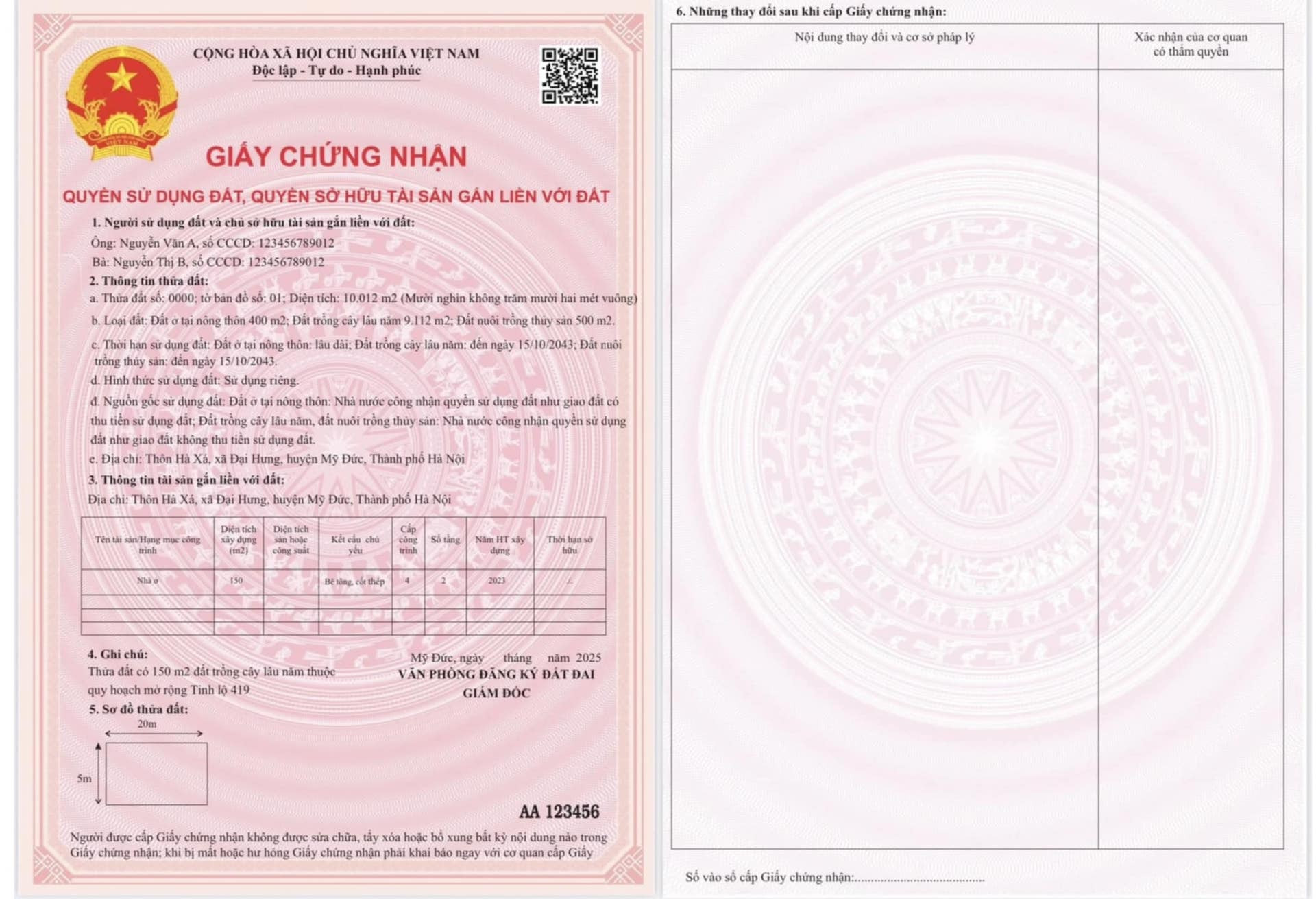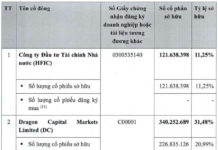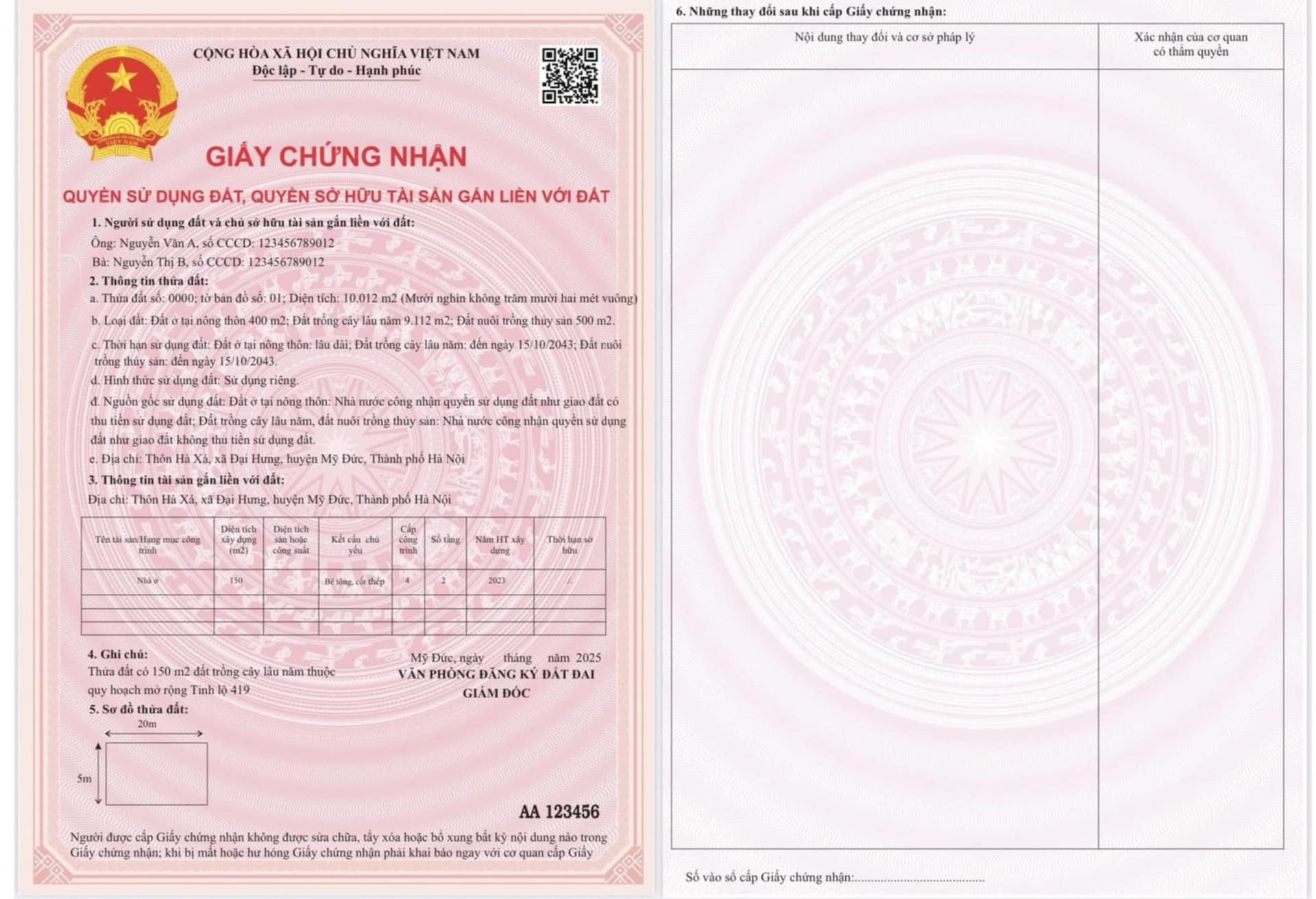The 2024 Land Law stipulates that the Certificate of Land Use Rights and Ownership of Assets Attached to Land (commonly known as the red book) is a legal document that confirms the lawful land use rights and ownership of assets attached to the land of the land user and owner.
Assets that are eligible for the certificate include houses and constructions attached to the land as stipulated by the law.
Certificates of land use rights and certificates of land use rights and ownership of houses and other assets attached to the land as prescribed by related laws shall be implemented in accordance with this law and are considered legally equivalent to the certificate of land use rights and ownership of assets attached to the land as prescribed by this law.
Compared to the 2013 Land Law, the new name for the red book is shorter, replacing the phrase “ownership of houses and other assets attached to the land” with “ownership of assets attached to the land.”

The Ministry of Natural Resources and Environment proposes a new sample of the Certificate of Land Use Rights and Ownership of Assets Attached to Land, which consists of only 2 pages and includes a QR code. Image source: Ministry of Natural Resources and Environment |
The old red books, issued before the effective date of the 2024 Land Law, are considered equivalent to the new ones and remain legally valid. There is no need to exchange them for the new version. However, if citizens wish to do so, the state agencies will accommodate their request.
The new red book will be issued following a unified national template, the details of which will be determined by the Minister of Natural Resources and Environment.
According to the draft circular on the certificate of land use rights and ownership of assets attached to the land and land dossiers (referred to as the certificate) that the Ministry of Natural Resources and Environment has been consulting on, the new red book will consist of only 2 pages instead of the current 4.
The new template will feature a QR code in the top right corner of the first page.
The national emblem will be placed in the lower left corner of the first page, instead of the current central position.
The center of the first page will display the words “Certificate” in large capital letters. Below this will be the phrase “Land Use Rights and Ownership of Assets Attached to Land” in smaller capital letters, replacing the current phrase “Land Use Rights, Ownership of Houses, and Other Assets Attached to the Land.”
Information about the land user and owner, land plot details (including plot number, land type, duration of use, form of land use, origin of land use, and address), details of assets attached to the land, and a diagram of the land plot will all be presented on the first page.
|
Over the past 20 years, the name of the red book has changed three times, corresponding to amendments to the Land Law. The 2003 Land Law stipulated that the red book be named “Certificate of Land Use Rights,” while the 2013 Land Law specified that it be called the “Certificate of Land Use Rights and Ownership of Houses and Other Assets Attached to the Land.” |
Hong Khanh
8-level Building for Sale at Nguy Nhu Kon Tum Street (Hanoi) Starting from 20.5 billion VND
This is an asset guaranteed by an individual at PVcomBank. The auctioned asset is the right to use 89m2 of land in urban areas, owning a house and other assets attached to the land at the address of block 12, collective residence B15 of the Ministry of Public Security (now number 17, alley 68, Nguy Nhu Kon Tum street), Nhan Chinh ward, Thanh Xuan district, Hanoi.
New law enacted, does Condotel have a “status”?
After experiencing numerous ups and downs in the market, the condotel segment seems to still lack a clear “identity” with the passing of the Real Estate Business Law 2023 and the Land Law 2024.









































